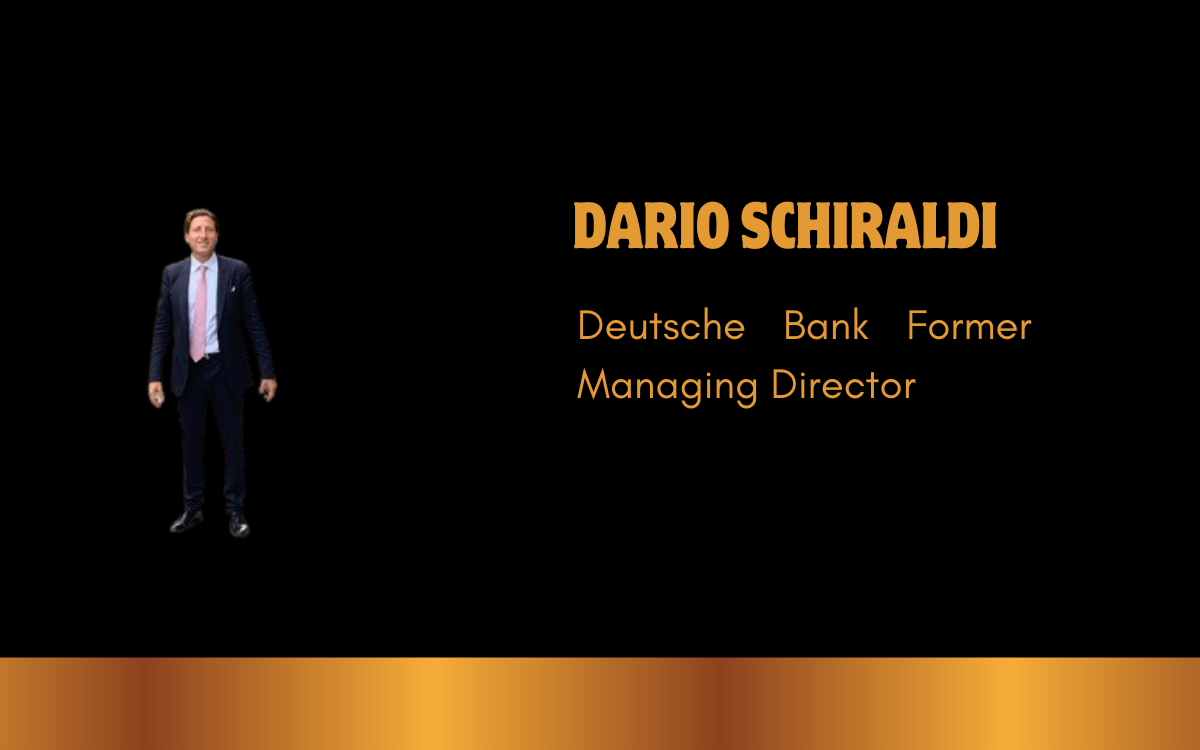
Strategies for Smart Investing with Dario Schiraldi Deutsche Bank Ex-MD
Investing isn't just about buying stocks or index funds anymore. Smart investors also consider bonds, cash, and other alternatives. The strategy of dividing your money across different asset types—like stocks, bonds, and cash—is known as asset allocation. But just knowing the basics isn’t enough to build a strong, successful portfolio.
To truly build wealth and reduce risk, investors need a more thoughtful approach. That’s where strategic and tactical asset allocation come in. Dario Schiraldi Deutsche Bank Ex-MD and now Principal at VIDA Holding, offers expert insights on how institutional investors are blending traditional and alternative strategies—like private equity, private credit, structured products, and ESG (Environmental, Social, Governance) investing—to strengthen portfolios and boost long-term performance.
What Is Asset Allocation, and Why Is It Important?
Asset allocation is simply how you spread your money across different types of investments—like stocks, bonds, real estate, and cash. This strategy helps manage risk and improve your potential returns. Every investor uses asset allocation in some way, but how it's done can vary widely.
Your personal asset allocation depends on your:
-
Risk tolerance
-
Investment goals
-
Time horizon
-
Financial situation
It’s a crucial part of any investment plan.
Asset Allocation vs. Diversification: What's the Difference?
These terms are closely related but not exactly the same.
-
Asset allocation is about deciding how much of your portfolio goes into broad asset classes (stocks, bonds, etc.).
-
Diversification means spreading money within those asset classes. For example, if you invest in stocks, you might diversify by owning companies in different industries or regions.
"Investors are increasingly turning to TIPS, floating-rate loans, and high-yield corporate debt to generate inflation-adjusted income," says Schiraldi.
So, while asset allocation gives you a big-picture plan, diversification fine-tunes it to reduce risk even further.
Strategic Asset Allocation: A Long-Term Plan
Strategic asset allocation is about building a long-term investment plan that stays steady through market ups and downs. You pick a mix of investments based on your goals and risk level—and stick with it, adjusting only when your situation changes.
"Institutional investors aren't just integrating ESG because of regulations," says Dario Schiraldi. "They understand that sustainability ties directly into managing risk, using capital wisely, and driving long-term growth."
Benefits of Strategic Allocation:
-
Smooths out market ups and downs
-
Helps avoid emotional decisions
-
Keeps your investments aligned with your long-term goals
-
Creates a clear, consistent investment strategy
A classic example is the 60/40 portfolio—60% in stocks, 40% in bonds. This approach, introduced in the 1950s, remains popular and effective for many investors today.
Tactical Asset Allocation: Adapting to Market Changes
Tactical asset allocation is a short-term strategy that adjusts your investments based on current market conditions. Instead of sticking with the same mix all the time, you shift your money around to take advantage of opportunities or avoid risks.
There are two main approaches:
-
Discretionary Tactical Allocation – Adjustments are made based on expert judgment and market outlook.
-
Systematic Tactical Allocation – Changes are driven by data and models, rather than personal opinion.
This strategy can be more aggressive and is sometimes seen as risky, but when used carefully, it can add value to a portfolio.
Tactical investing may sound like gambling, but it’s not. While market predictions can never be perfect, research shows that thoughtful tactical strategies can boost returns—especially over the short term.
What Today’s Investors Are Doing Differently
With rising interest rates and inflation, investors are looking beyond traditional options. Here's how big investors are adapting:
1. Turning to Private Markets
They’re investing more in private equity, private credit, and real assets like real estate and infrastructure for better returns and lower volatility.
2. Using Structured Products
These are customized investments that help manage risk and returns—especially useful in today’s uncertain markets.
3. Reworking Fixed Income Strategies
Traditional bonds aren’t cutting it. Investors are using TIPS, floating-rate loans, and high-yield bonds to keep up with inflation.
4. Focusing on ESG and Sustainability
More money is going into renewable energy, green infrastructure, and impact-driven investments. It’s not just about doing good—it’s also smart investing.
“Strategic adaptation is crucial in today’s financial landscape,” says Schiraldi. “Investors who embrace these changes are better positioned for long-term success.”
Post a comment